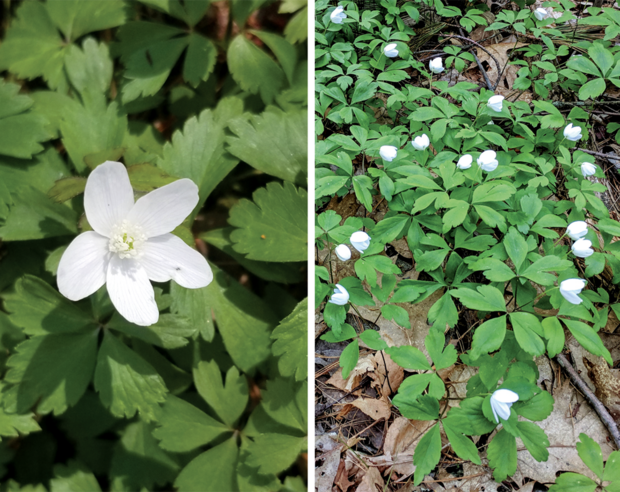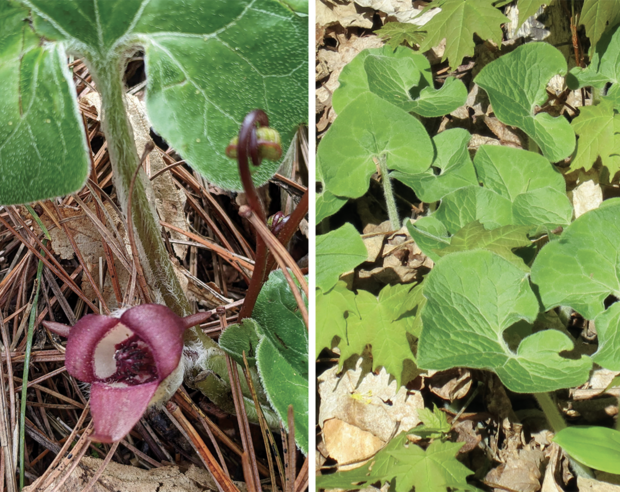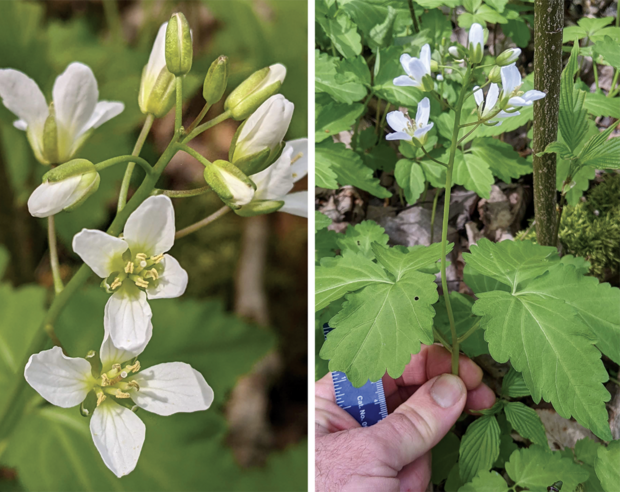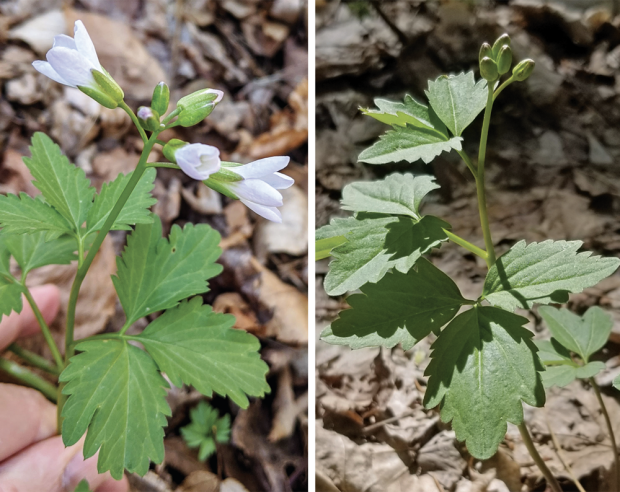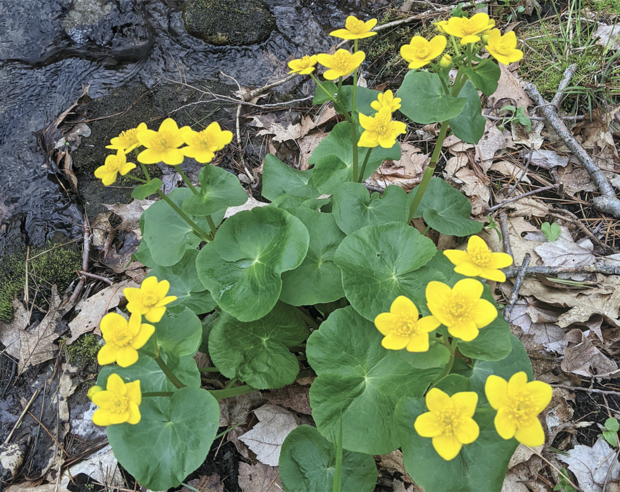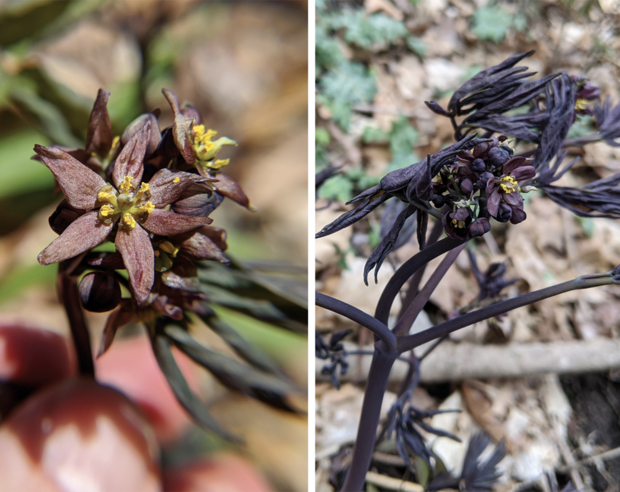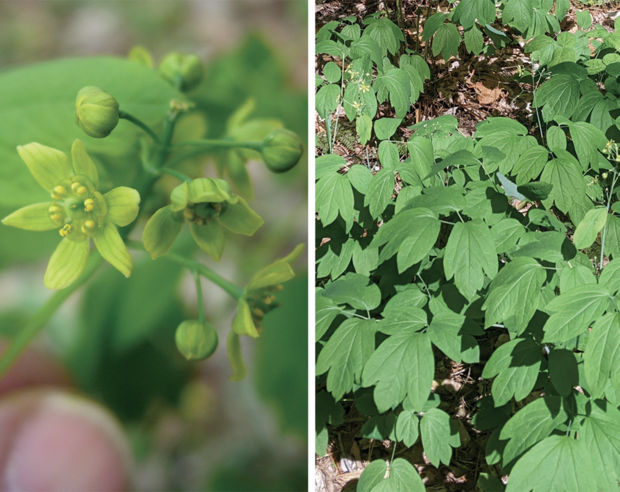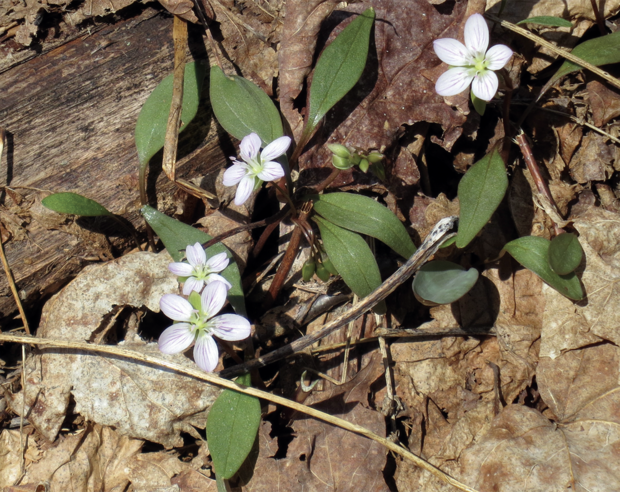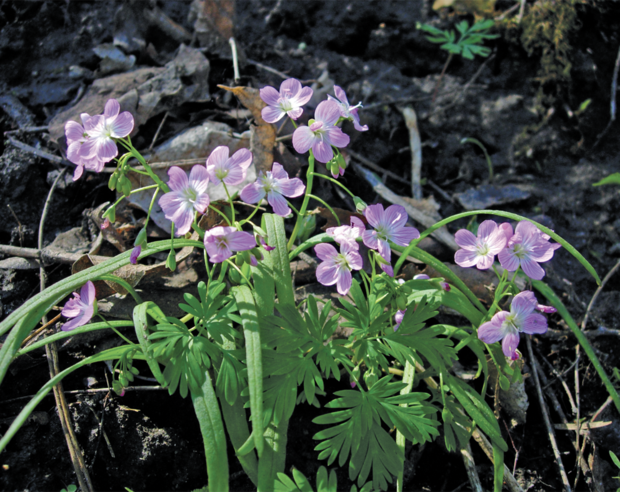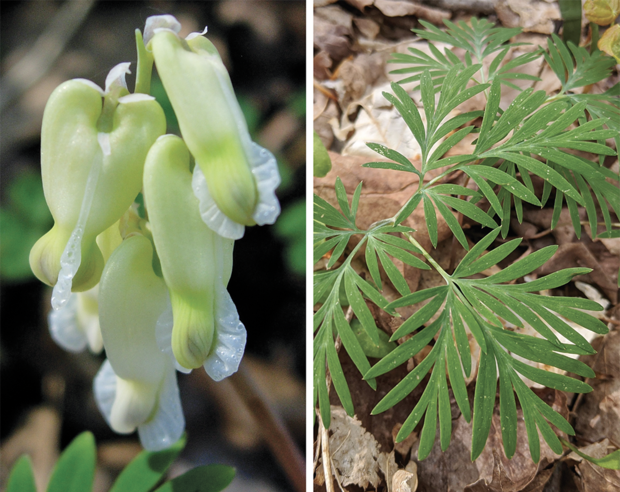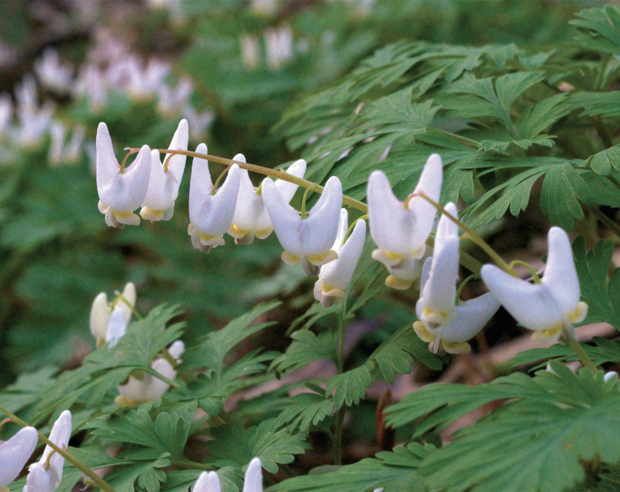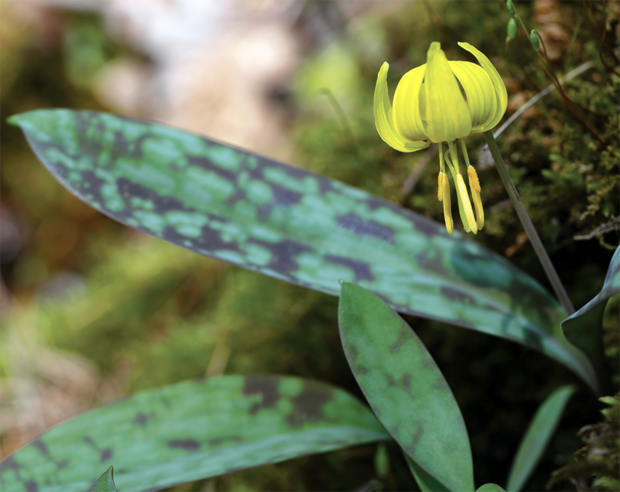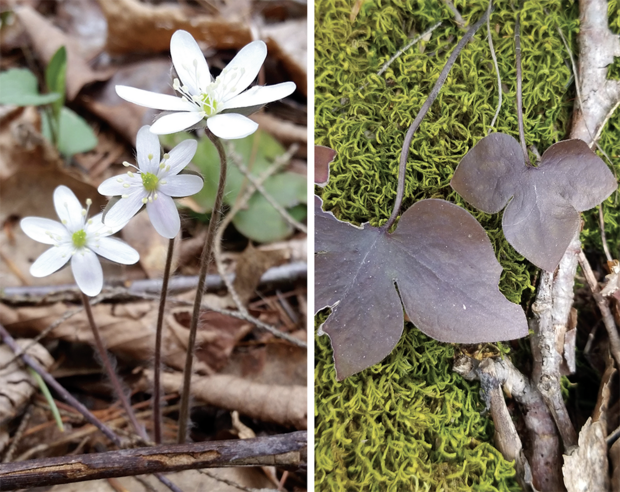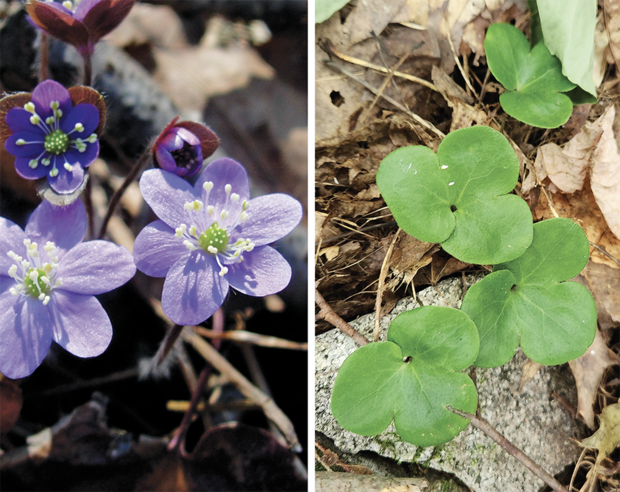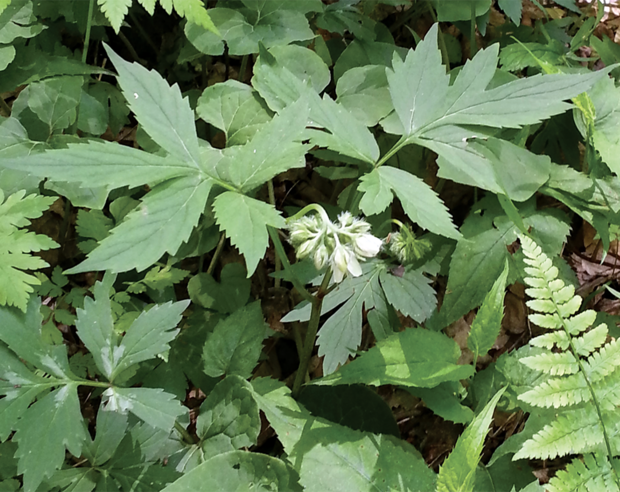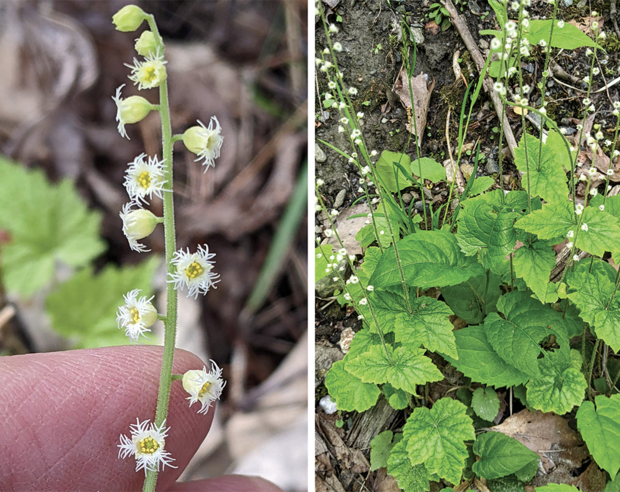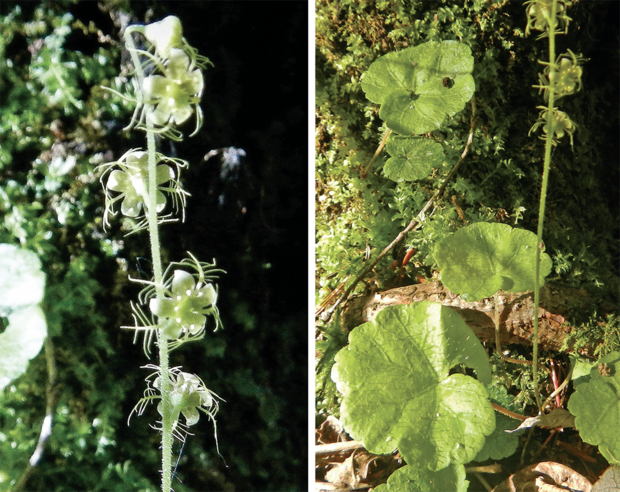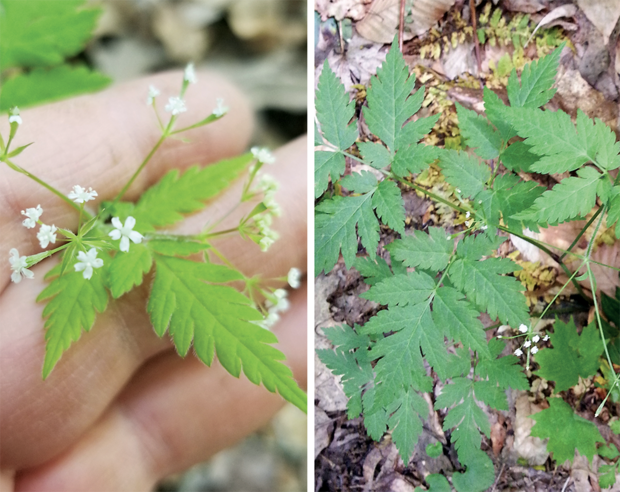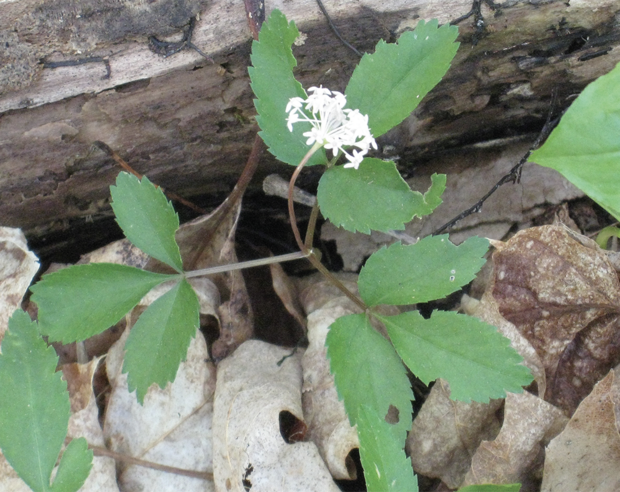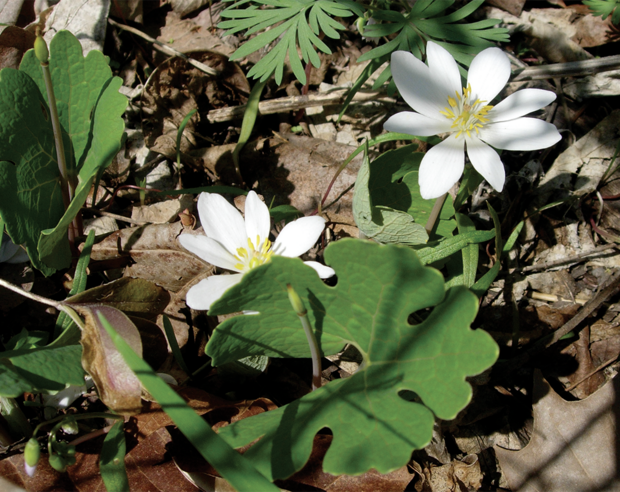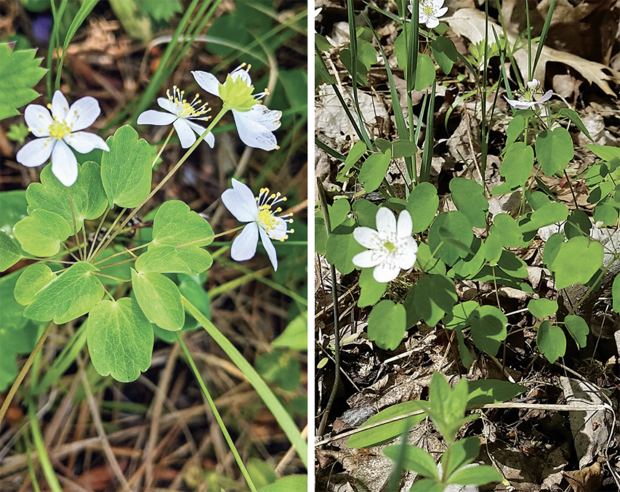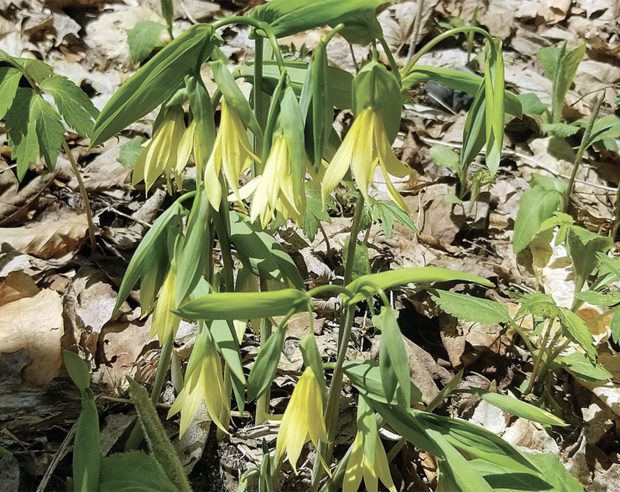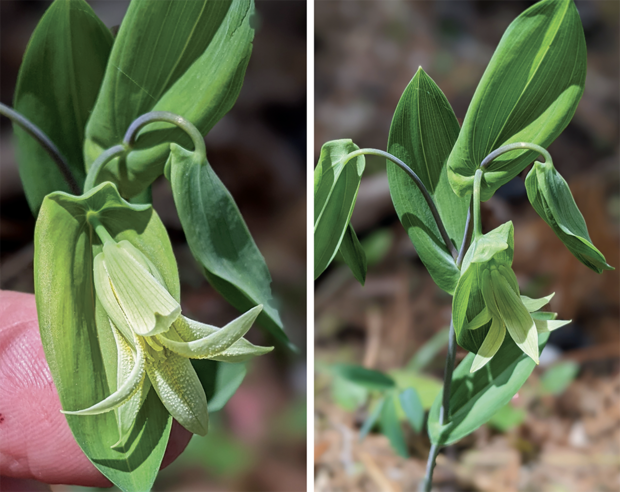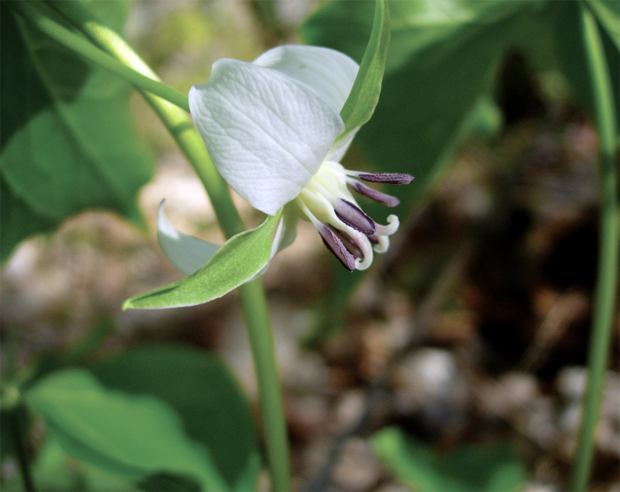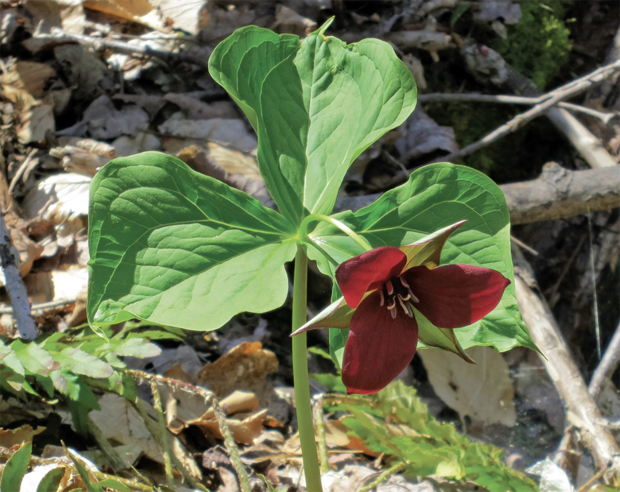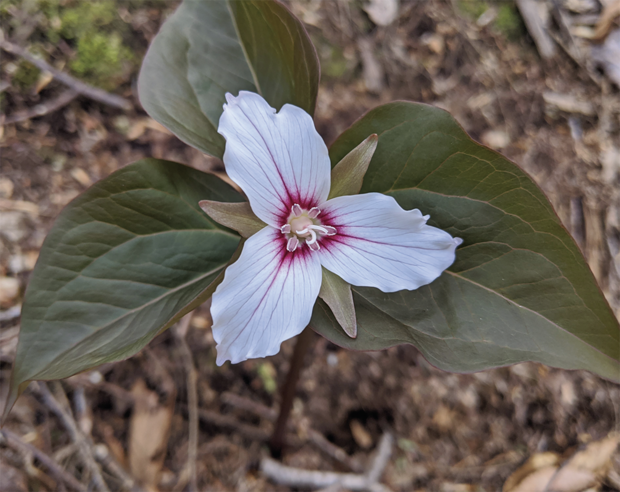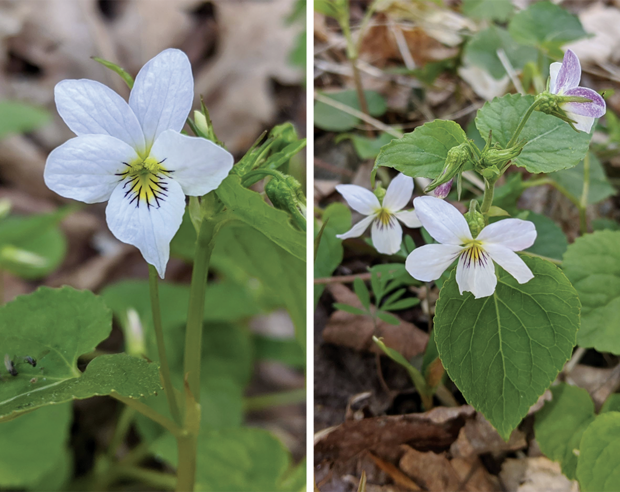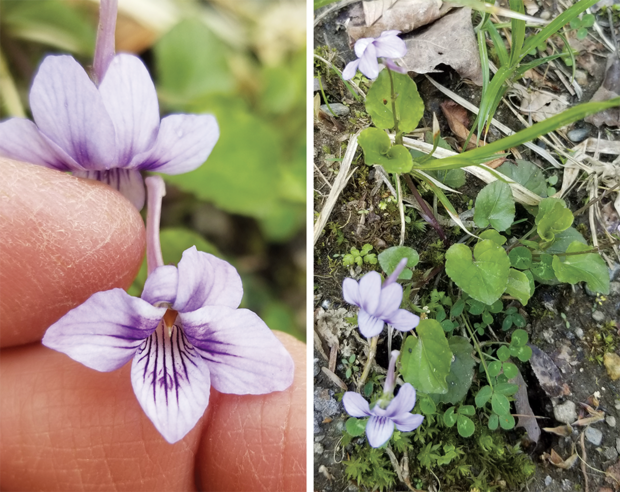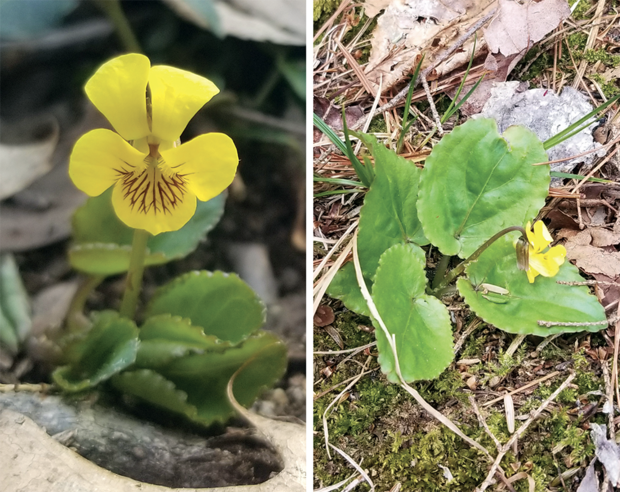About spring ephemerals
Early flowering plants that produce leaves, bloom, and set seed quickly after the snow melts in the spring are referred to as spring ephemerals. Many people look forward to the appearance of these appealing wildflowers with great excitement as they represent the seasons changing. Spring ephemeral flowers also provide the much-needed first nectar and pollen of the season for over-wintering pollinators, including bumblebee queens, mining bees, halictid or sweat bees, early butterflies, beetles, flies, and gnats. In return, these insects transfer pollen from one plant to another.
Spring ephemerals are found in deciduous forests dominated by sugar maple, ash, black cherry, and hop hornbeam trees. Before the trees have their leaves, these wildflowers show up early to take advantage of the unobscured access to sunlight. While the trees are still dormant, spring ephemerals are in a race against time. They take advantage of the above-average nutrient levels in the soil (from decomposing fall leaves) to photosynthesize quickly. This provides the energy they need for flowering, setting seed, and storing carbohydrates for the following year all before the tree canopy blocks sunlight from the forest floor.
The forest trees pull large amounts of water out of the soil when they start to grow leaves. The amount of water being absorbed by the trees is so great that it causes groundwater levels to drop. Before this happens, spring ephemerals use the higher moisture levels in the soil to carry out their life cycle. The dampness also helps them tolerate low temperatures they often face in early spring.
Please keep in mind that the survival of a plant population depends on each plant’s ability to produce seed for the following year. If you find a location with these beautiful plants, enjoy them in place and do not pick them. Other people who follow in your path will appreciate what you have admired and left untouched, as will the many native pollinator insects that depend on spring ephemerals for their survival.
Field guide
| Spring ephemerals of Massachusetts |
|---|
|
Wood anemone (Anemone quinquefolia) Single flowers with typically 5 white petal-like sepals, 1 inch wide, above 3 whorled leaves, each with 3–5 leaflets, some of which are sharply lobed. Edges of the leaflets are toothed. Plant height 2–10 inches. |
|
Wild columbine (Aquilegia canadensis) Red and yellow bell-shaped flowers with 5 upright red spurs. Flowers are up to 2 inches long including spurs. Leaves are divided into 3 stalked oval leaflets. Plant height ranges from 12–36 inches. Not a true spring ephemeral as its leaves last all summer. |
|
Wild ginger (Asarum canadense) Deep maroon flowers, with 3 triangular petal-like sepals forming an open tube found at the base of the plant under the leaves. Leaves are heart-shaped on thick stems covered in fine hair, arising in clusters from the ground. It grows to 8 inches tall, and its leaves stay green throughout the summer. |
|
Cut-leaved toothwort (Cardamine concatenata) Flowers have 4 white (occasionally pink) petals in a raceme above the leaves. Flowers are ½–¾ inch across. It has 3 whorled, highly divided leaves, each with 3–5 narrow leaflets that have sharply toothed edges. Plants reach a height of 4–16 inches. |
|
Two-leaved toothwort (Cardamine diphylla) Flowers have 4 white (occasionally pink) petals in a raceme above the leaves. It has 2 opposite leaves with 3 broad leaflets each, which are coarsely toothed. Plants reach a height of 6–12 inches. |
|
Three-leaved toothwort (Cardamine maxima) Similar to the two-leaved toothwort with 4 white (occasionally pink) flowers in a raceme above the leaves, this species usually has 3 alternating leaves, each divided into 3 crossly toothed broad leaflets. The edges of the leaves are fringed with tiny hairs. Plant height is 6–16 inches. |
|
Marsh marigold (Caltha palustris) Large bright yellow flowers with 5–9 petal-like sepals (1½ inches wide) in clusters on stems above the leaves. The large leaves are rounded and heart-shaped with the indent at the stem. The leaves are 1–5 inches long/wide and are finely toothed. Plant are found in wetlands and grow to 6–24 inches. |
|
Early blue cohosh (Caulophyllum giganteum) Only recently identified as a separate species from blue cohosh. It blooms before its leaves have started to expand. It has clusters of 5–18 flowers each with 6 purple sepals ¼ inch long. Its leaves are alternate and divided into rounded leaflets. Plant height can reach 3 feet. |
|
Blue cohosh (Caulophyllum thalictroides) Similar to early blue cohosh. The yellowish green flowers open as the leaves are expanding. The sepals are less than ¼ inch in length. The flower clusters can have 5–70 flowers. The leaves are alternate along the stem, divided into 3 or more rounded leaflets. Plants can reach 3 feet in height. |
|
Spring beauty (Claytonia caroliniana) The 5 white-to-pink petals with pink lines radiate out from the center. Flowers are in racemes above leaves, each ½ inch wide. Leaves are opposite and simple oval-shaped, 1–3 inches long, with a distinct stem (petiole) and typically a half inch to a full inch wide. Plants reach a height of 2–10 inches. |
|
Narrow-leaved spring beauty (Claytonia virginica) Endangered in Massachusetts. Similar to the more common spring beauty, with 5-petaled white-to-pink flowers. The opposite leaves below the flower raceme are linear up to 6 inches long, 8 or more times as long as wide. Plant grow to 2–10 inches. |
|
Squirrel corn (Dicentra canadensis) Pale yellow-to-white flowers with upright parallel lobes (spurs) in a raceme above the leaves. The flowers are up to ¾ inch long. The bluish green leaves are highly divided giving a feathery appearance. Leaves are basal, growing straight from the ground without a mainstem. Plants grow to 4–12 inches. |
|
Dutchman’s breeches (Dicentra cucullaria) White flowers with 2 upright lobes (spurs) angling away from each other on a raceme above the leaves. Each flower is ¾ inch long. The leaves are similar to squirrel corn, bluish green, with a feathery appearance. Leaves and flower stems grow only from base of plant. Plants grow to 4–12 inches. |
|
Trout lily (Erythronium americanum) Nodding flowers with 6 yellow, petal-like tepals (anatomically a combination of petals and sepals, common in the lily family) with either yellow or red pollen on anthers in the center. Flowers are up to 2 inches wide. Leaves are basal (growing from the base of the plant), oval and are green mottled with brown and whitish spots, as a trout might be. Plant height is 4–10 inches. |
|
Sharp-lobed hepatica (Hepatica acutiloba) Blue, white, or pink flowers with 5–12 petals, with soft hairs on the stems and buds, each arising on its own stem from the ground. The flowers open on sunny days, and close at night and on rainy days. The leathery leaves are partially divided into 3 lobes with their tips sharply pointed. Plant height is 2–8 inches. |
|
Blunt-lobed hepatica (Hepatica americana) Flowers are similar to sharp-lobed hepatica, usually in clusters, soft hairs cover the flowering stems and bracts. Its leathery leaves have 3 rounded lobes and are often burgundy-colored in the spring. Each flower stalk and leaf arises on its own stem. Plants reach 2–8 inches. |
|
Virginia waterleaf (Hydrophyllum virginianum) White-to-lavender flowers in a coiled cluster on a stalk above the leaves. Each ¼–⅜ inch wide. Distinctly shaped leaves are 4–8 inches long, alternate along the stem. They are deeply divided into 3–7 toothed leaflets, often with white mottling appearing as though flecked with water. Plants reach a height of 1–2 feet. |
|
Miterwort or bishop’s cap (Mitella diphylla) Tiny fringed 5-petaled flowers on an open spike above a pair of opposite oval leaves. Flowers are only ⅛–¼ inch wide. It is usually found on or near rocks along streams or seeps. Plant height is 3–18 inches. |
|
Naked bishop’s cap (Mitella nuda) Delicate 5-parted flowers, ¼ inch wide, on a spike. This blooms slightly later than miterwort, but still is usually in seed at the end of June. It has 5 small, greenish sepals with 5 greenish petals that look like a feathery fan sticking out between the sepals. This species is most common in mossy wetlands in Berkshire County. Plant height is 3–12 inches. |
|
Sweet cicely (Osmorhiza claytonii) Tiny white flowers ⅛ inch wide in an open umbel. Leaves are alternate and divided into fern-like leaflets. The stem is densely covered with soft fine hairs. A related species, longstyled sweet cicely, has hairless stems except at the nodes. Plant height reaches 1–3 feet. |
|
Dwarf ginseng (Panax trifolius) Small white flowers in a rounded cluster above the whorled leaves. The whorled leaves are divided into 3–5 palmate oval leaflets, 1–2 inches long. Plant height is 4–8 inches. Note: the roots of dwarf ginseng are not valued, sold, or used for the same purposes as its much larger cousin, American ginseng. |
|
Bloodroot (Sanguinaria canadensis) Single flower with 6–12 white petals on a stem directly from the ground. A single leaf grows from base of plant, initially wrapping around flowering stalk. The leaf is simple with lobes along its outer edge. Leaves and flowers are basal, growing from single stems at the base of the plant. Leaves can last through the summer. Plant height is 2–12 inches. |
|
Rue anemone (Thalictrum thalictroides) Look for 1–6 flowers with 6–10 white petal-like sepals, ¾ inch wide, in an umbel-like cluster above the whorl of leaves on the flower stem. Basal stalked leaves also occur and are divided into 3 groups of 3 rounded leaflets each with wide teeth at their outer edges. Plant height is 4–8 inches. |
|
Large-flowered bellwort (Uvularia grandiflora) Drooping leaves and flowers distinguish this species. Bright yellow, 6-petaled flowers are 1–2 inches long, as single flowers or in small clusters. Petals (technically tepals) are smooth inside, twisted at their tips. The leaves are 2½–5 inches long, whitish underneath, and appear to be pierced by the stem. There are 1 or 2 leaves below the fork in the stem. Plant height reaches 8–24 inches. |
|
Perfoliate bellwort (Uvularia perfoliata) Similar to large-flowered bellwort with pale yellow 6-petaled flowers, ¾–1¼ inches long. Petals (technically tepals) are roughened with yellow or orange grains on inside. Linear leaves are 1½–4 inches long and are pierced by stem, with 1–4 leaves below the stem fork. Plant height is 8–16 inches. |
|
Nodding trillium (Trillium cernuum) White 3-petaled flower with 3 green sepals on a single flower tucked under the 3 broadly oval leaves. Flowers are 1–2 inches wide. Leaves are 2½–4 inches long. Flower petals are recurved at the tips and may be lightly striped with pink lines. Plant height is 8–20 inches. |
|
Red trillium (Trillium erectum) Also known as wake robin. Three red-to-maroon petals with 3 green sepals, all the same length and sharply pointed. The flowers are 1–3 inches wide, slightly nodding, above 3 stemless, broad diamond-shaped leaves, each 2–8 inches long. Smells like rotting meat. Plant height is 8–24 inches. Occasionally a white form is found. |
|
Painted trillium (Trillium undulatum) Upright white flower with 3 petals and 3 green sepals; petals are streaked in the center with dark pink, 1½–2½ inches wide. Flower is on stem above three oval 2–5 inch-long leaves on short stems. Plant height is 8–20 inches. |
|
Canada violet (Viola canadensis) This violet has 5 white petals, often pale lavender on back, with a yellow throat. Like all violets, the flower is bilaterally symmetrical, with each half a mirror image of the other vertically. Flower width is 1 inch, leaves are finely toothed and heart-shaped, 2–4 inches long. Leaves and flowers are attached to an aerial stem. Plant height is 8–16 inches. |
|
Long-spurred violet (Viola rostrata) A small, pale purple violet, with a ½ inch long spur behind the flower. Hairless side and lowest petals striped with dark purple. Flowers grow on a long stem from axils of the leaves with small, fringed bracts (stipules) at the axil. Leaves are heart-shaped, and alternate on the stem. Plant height is 2–8 inches. |
|
Round-leaved violet (Viola rotundifolia) One of the 2 early yellow-flowered violets. Unlike the other violets above, these have leaves and flowers emerging directly from the ground, without a central stem. The leaves are broadly oval, indented at the stem end. These rounded leaves will continue growing throughout the season, often lying on the ground. Plant height is 2–5 inches. |
